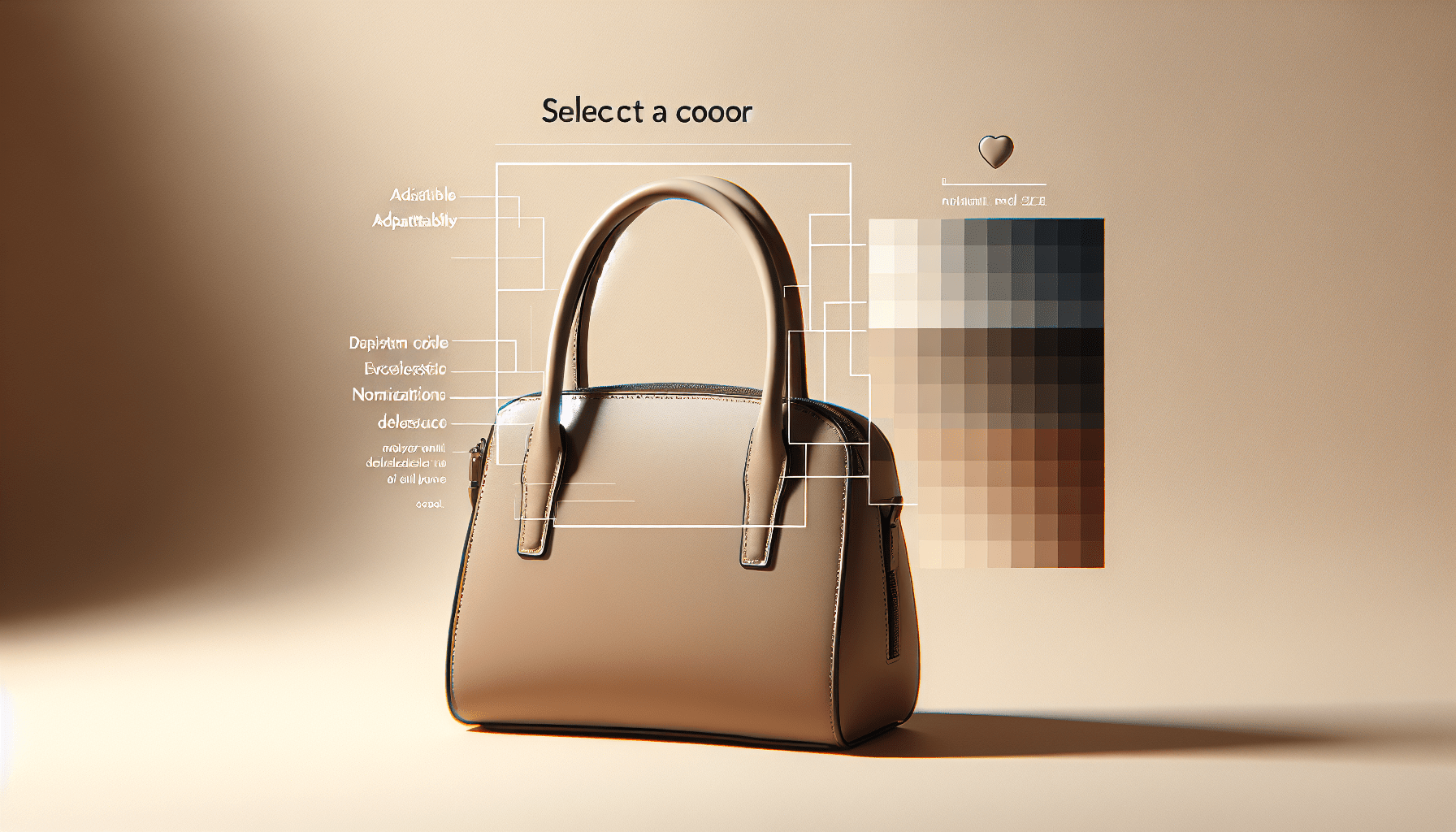What’s The Best Way To Clean And Maintain My Handbag
Keeping your handbag clean and well-maintained is essential to preserve its longevity and overall appearance. In this article, you’ll discover the best practices and tips on how to effectively clean and maintain your handbag, ensuring it stays in tip-top condition for years to come. From simple spot cleaning techniques to proper storage and maintenance rituals, you’ll find everything you need to know to keep your handbag looking as good as new. So, whether you’re a fashion enthusiast or simply want to extend the life of your favorite accessory, read on to discover the ultimate guide on cleaning and maintaining your handbag.
Understanding Handbag Materials
When it comes to handbags, it’s important to understand the different materials they are made of. This knowledge will not only help you identify the type of material your handbag is made of, but also guide you in caring for your bag properly. The three main types of materials commonly used for handbags are leather, suede, and exotic skins.
Identifying Leather, Suede, and Exotic Skins
To identify whether your handbag is made of leather, look for natural variations in the material, such as wrinkles or grain patterns. Leather typically has a soft and smooth texture. Suede, on the other hand, has a velvety surface with a slightly fuzzy texture. It is important to note that suede is more delicate than leather and requires special care. Exotic skins, such as snake or crocodile, often have unique patterns and textures that make them stand out. These materials require specific cleaning and maintenance techniques to ensure their longevity.
Recognizing Canvas, Nylon, and Cotton Bags
Canvas, nylon, and cotton are popular materials used for casual and everyday handbags. Canvas is known for its durability and sturdiness, often used in tote bags and backpacks. Nylon is a lightweight and water-resistant material that is easy to clean, making it ideal for travel or sports bags. Cotton is another versatile material used in handbags, offering a wide range of colors and patterns. These materials are relatively easy to care for and can withstand regular use.
Distinguishing Synthetic Materials such as PVC, Polyester, and Nylon
Synthetic materials like PVC, polyester, and nylon have become increasingly common in the production of handbags. PVC, a type of plastic, is often used to create a glossy and waterproof finish. Polyester is a synthetic fabric that is known for its durability and resistance to wrinkles. nylon, as mentioned earlier, is also a popular synthetic material due to its lightweight and water-resistant properties. These materials require specific cleaning methods to avoid damage, so it’s important to refer to the manufacturer’s guidelines.
Basic Tips for Handbag Care
Proper care and maintenance are key to preserving the beauty and longevity of your handbags. By following these basic tips, you can keep your handbags looking their best for years to come.
Regularly Emptying Your Handbag
First and foremost, it’s important to regularly empty your handbag. Remove all items from the bag, including receipts, loose change, and any other debris. This will prevent unnecessary stress on the bag’s handles or straps and help maintain its shape.
Avoid Overstuffing to Prevent Distortion
While it may be tempting to fill your handbag to the brim, overstuffing can lead to distortion and strain on the bag’s seams. Avoid loading your bag with excessive weight and only carry what you truly need. This will ensure that your handbag retains its original shape and structure.
Avoid Exposing Your Bag to Direct Sunlight
Direct sunlight can fade the color of your handbag and cause the material to become brittle over time. Whenever possible, avoid leaving your handbag in direct sunlight for extended periods. If you need to leave your bag in a sunny area, consider using a bag cover or placing it in a shaded spot.
Keeping Cosmetics in Separate Pouches
To prevent spillage and potential damage to your handbag’s interior lining, it’s a good idea to store your cosmetics and toiletries in separate pouches. This will help contain any leaks or spills, making them easier to clean and prevent them from seeping into the fabric of your handbag.
Storing Your Handbag Correctly
Proper storage is crucial in maintaining the shape, condition, and longevity of your handbag. By following these tips, you can ensure that your handbag remains in excellent condition even when not in use.
Using a Dust Bag for Storage
Most handbags come with a dust bag, which is designed to protect the bag from dust, dirt, and scratches when not in use. When storing your handbag, place it inside the dust bag and fasten the drawstring to keep it securely closed. This will help maintain the bag’s pristine condition and protect it from environmental damage.
Maintaining Bag Shape during Storage
To prevent your handbag from losing its shape while in storage, consider using either stuffing or a bag insert made of soft material. Gently fill the interior of the bag with acid-free tissue paper, bubble wrap, or even a clean hand towel to provide support and help retain its shape. Avoid using newspaper, as the ink can transfer onto the lining or exterior of the bag.
Avoiding Humid or Damp Storage Environments
Humidity and moisture can cause damage to your handbag, especially if it is made of leather or suede. To prevent mold, mildew, or other forms of water damage, store your handbag in a cool, dry place. Avoid storing it in basements, attics, or areas prone to excessive moisture. If necessary, consider utilizing a dehumidifier in the storage area to maintain optimal conditions.
Regular Cleaning of Your Handbag
Regular cleaning is vital to keeping your handbag looking fresh and new. Here’s a step-by-step guide on how to clean different types of materials commonly used in handbags.
Wiping Down Exterior with a Dry Cloth
For most handbags, wiping down the exterior with a dry, lint-free cloth regularly is sufficient for general maintenance. This removes dust, dirt, and any surface grime. Be gentle when wiping, especially for delicate materials, to avoid scratching or damaging the surface.
Spot Cleaning With Mild Liquid Detergents
For small stains or spills on leather, fabric, or synthetic handbags, spot cleaning with a mild liquid detergent can do the trick. Dilute the detergent in warm water, dip a clean cloth or sponge in the solution, and gently dab the stained area. Avoid rubbing vigorously, as this may spread the stain or damage the material. Rinse the cloth or sponge with clean water and blot the area to remove any detergent residue. Finally, let the bag air dry in a well-ventilated area, away from direct heat sources.
Deep Cleaning with Specialist Products
If your handbag requires a thorough cleaning, such as removing built-up dirt or stains that cannot be easily spot cleaned, consider using specialist cleaning products specifically formulated for the type of material your handbag is made of. Follow the instructions provided with the product, and always test a small, inconspicuous area of the bag before treating the entire surface.
Removing Stains from Your Bag
Stains can be particularly stubborn to remove, depending on the type of material your handbag is made of. For leather and synthetic materials, it’s crucial to address the stain as soon as possible. Blot the stain gently with a clean cloth or sponge dipped in a mild detergent solution. For more resistant stains, consider using a dedicated stain remover or consulting a professional cleaner for advice.
Cleaning Suede Handbags
Suede handbags require special care due to their delicate nature. Here’s a guide on how to clean and maintain your suede handbag.
Using a Suede Brush
To remove surface dirt and restore the nap of the suede, use a suede brush. Gently brush the surface of your handbag in one direction, following the grain of the suede. This will help lift any trapped dirt or debris and prevent matting of the fibers. Avoid excessive pressure or brushing in multiple directions, as this can damage the suede.
Applying a Suede Cleaner
For more stubborn stains or ingrained dirt, use a suede cleaning solution specifically designed for suede materials. Follow the instructions provided with the cleaner and apply it to a clean, soft cloth or sponge. Dab the stained area gently, being careful not to saturate the suede. Blot away any excess cleaning solution with a clean cloth and allow the handbag to air dry naturally. Once dry, use a suede brush to restore the texture and remove any residual cleaning product.
Avoiding Water and Other Liquids
Water and suede do not mix well, as it can cause discoloration and damage to the suede fibers. It’s important to keep your suede handbag away from water and other liquids. If your suede handbag does get wet, gently blot the excess moisture with a clean towel and allow it to air dry naturally. Avoid using heat sources such as hairdryers or radiators, as this can cause the suede to become brittle or shrink.
Cleaning Leather Handbags
Leather handbags are known for their durability and timeless appeal. Here’s how you can clean and maintain your leather handbag to keep it looking its best.
Using Leather Cleaner
Start by applying a small amount of leather cleaner onto a clean, soft cloth or sponge. Gently wipe the entire surface of the handbag, paying attention to any visible dirt, stains, or spots. Be thorough but gentle to avoid causing any damage to the leather. Once cleaned, wipe away any excess cleaner with a clean cloth.
Polishing to Maintain Shine
After cleaning, you can restore the shine and luster of your leather handbag by applying a leather polish or conditioner. Apply a small amount of the polish or conditioner onto a clean cloth and gently rub it into the leather using circular motions. Allow the polish or conditioner to absorb into the leather for a few minutes, and then buff the surface with a clean, dry cloth to achieve a beautiful shine.
Conditioning to Prevent Cracking
To prevent your leather handbag from drying out and cracking, it’s essential to regularly condition it. Choose a leather conditioner specifically formulated for handbags and apply a small amount onto a clean cloth. Gently rub the conditioner into the leather, focusing on areas that are prone to dryness, such as handles or corners. Allow the conditioner to absorb into the leather overnight before using the handbag again.
Cleaning Canvas or Fabric Bags
Canvas and fabric bags are versatile and often used for casual or everyday purposes. Here’s how you can clean and maintain your canvas or fabric handbag.
Spot Cleaning Stains
For small stains or spots on your canvas or fabric handbag, spot cleaning is usually sufficient. Create a solution of mild detergent and warm water, and dip a clean cloth or sponge into the solution. Gently dab the stained area, taking care not to rub or scrub vigorously. Rinse the cloth or sponge with clean water and blot the area to remove any detergent residue. Finally, air dry the bag in a well-ventilated area to prevent shrinking.
Using Mild Detergent for Deep Cleaning
For more extensive cleaning of your canvas or fabric handbag, such as removing ground-in dirt or odors, mix a small amount of mild detergent with warm water. Dip a soft brush or cloth into the solution and gently scrub the entire surface of the bag. Pay extra attention to any heavily soiled areas. Rinse the brush or cloth with clean water and repeat the process to remove any soap residue. Let the handbag air dry naturally.
Air Drying to Prevent Shrinking
After cleaning, it’s important to allow your canvas or fabric handbag to air dry thoroughly. Avoid using heat sources such as hairdryers or radiators, as they can cause the material to shrink or become misshapen. Instead, find a well-ventilated area and place the bag on a clean, dry towel or hang it up using a clothes hanger. Ensure that the bag is fully dry before storing or using it again.
Cleaning Exotic Material Bags
Exotic skins and materials require special attention and care to maintain their unique beauty. Follow these guidelines to clean and care for your exotic material handbags.
Professional Cleaning for Exotic Skins
Exotic skins, such as snake or crocodile, require professional cleaning to ensure their proper care. Due to their delicate nature, it’s essential to consult a professional cleaner experienced in handling exotic skins. They will have the expertise and specialized tools to clean and condition the material without causing any damage or discoloration.
Careful Spot Cleaning for Precious Metals
Handbags with precious metal accents or hardware, such as gold or silver, should be cleaned with care. Use a soft cloth or sponge dampened with warm water to gently wipe the metal areas. If necessary, use a mild detergent solution to remove any stubborn grime. After cleaning, dry the metal thoroughly with a clean cloth to avoid water spots or tarnishing.
Specific Care for Tweed, Silk, and Velvet Bags
Handbags made of tweed, silk, or velvet require specific care to maintain their delicate fabrics. Before cleaning, check the manufacturer’s guidelines and follow their recommendations. In most cases, spot cleaning with a gentle detergent specially formulated for delicate fabrics is the safest option. Avoid saturating the material and always air dry in a well-ventilated area away from direct heat or sunlight.
Regular Maintenance of Your Handbag
Regular maintenance is crucial to catch any issues early on and prevent further damage. Incorporate these habits into your routine to ensure your handbag stays in excellent condition.
Checking for Loose Threads or Missing Buttons
Regularly inspect your handbag for any loose threads or missing buttons. Pay attention to seams, straps, and fastenings, as these areas are prone to wear and tear. If you notice any loose threads, carefully trim them with a pair of small, sharp scissors to prevent further unraveling. Missing buttons can be replaced by a professional or by sourcing the original buttons to maintain the bag’s original aesthetic.
Regular Inspection for Color Fading or Surface Cracking
To prevent serious damage, regularly inspect your handbag for any signs of color fading or surface cracking. Exposure to sunlight, harsh chemicals, or improper cleaning techniques can all contribute to these issues. If you notice any fading or cracking, consider consulting a professional cleaner or the manufacturer for advice and possible restoration options.
Repairing Damaged Parts Promptly
If you encounter any damage to your handbag, such as a torn lining, loose strap, or scratched leather, it’s important to address it promptly. Ignoring minor damages can lead to more significant problems in the future. Depending on the extent of the damage, you may choose to repair it yourself or seek professional help. For valuable or sentimental handbags, consulting a professional is often the best choice to ensure a high-quality repair.
Professional Handbag Care
While regular cleaning and maintenance can go a long way in preserving your handbag’s beauty, there may come a time when professional care is necessary. Here’s what you need to know about professional handbag care.
When to Consult a Professional Cleaner
There are certain situations when it’s best to leave the cleaning and maintenance of your handbag to the experts. If you’re dealing with extensive stains, deep-seated odors, or intricate details that require delicate handling, it’s advisable to consult a professional cleaner. They have the knowledge, experience, and specialized techniques to tackle challenging issues and restore your handbag to its former glory.
Understanding the Cleaning Process
Professional handbag cleaning involves a comprehensive and meticulous process. The cleaning professionals will assess the material, identify the best cleaning methods, and proceed accordingly. They will use specialized cleaning products and techniques specifically designed for each type of material. The cleaning process may involve spot treatment, deep cleaning, stain removal, and conditioning, depending on the needs of your handbag.
The Cost and Benefits of Professional Care
Professional handbag care comes at a cost, but the benefits can outweigh the expense. By entrusting your handbag to experts, you can have peace of mind knowing that it is in capable hands. The skillful cleaning and restoration processes employed by professionals can revitalize even the most damaged or neglected handbags. Additionally, professional care can extend the lifespan of your handbag, maintaining its value and enhancing its overall appearance.
In conclusion, understanding the materials used in handbags and implementing proper cleaning and maintenance practices is crucial for preserving their beauty and longevity. By identifying the type of material your handbag is made of and following the appropriate cleaning techniques, you can ensure that your handbag remains in excellent condition for years to come. Whether you opt for regular maintenance at home or seek professional care, investing time and effort in caring for your handbag will undoubtedly pay off in the long run.




